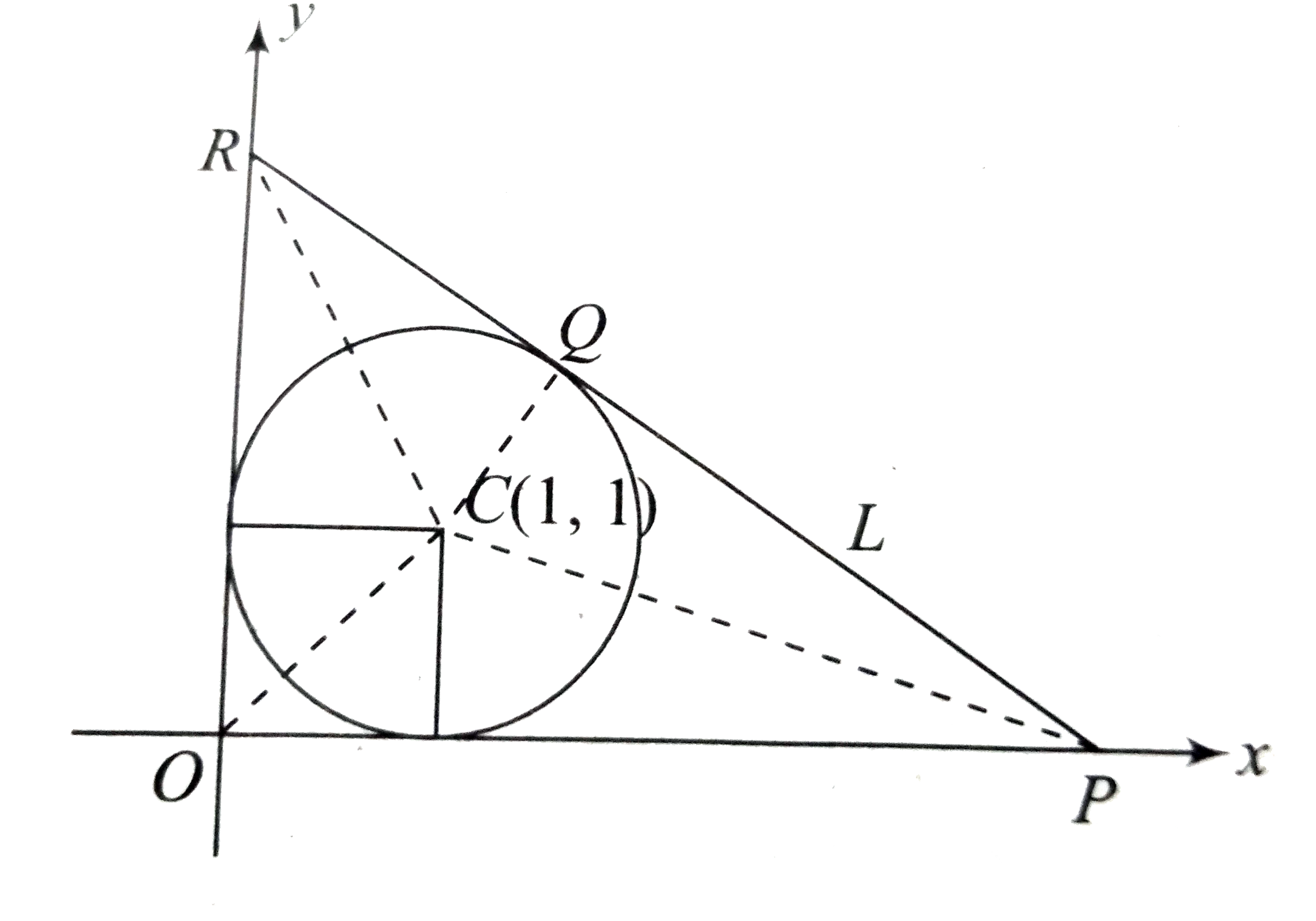For a non-zero complex number z , let arg(z) denote the principal argument with −π<arg(z)≤π Then, which of the following statement(s) is (are) FALSE? arg(−1,−i)=π4, where i=√−1 (b) The function f:R→(−π,π], defined by f(t)=arg(−1+it) for all t∈R , is continuous at all points of R , where i=√−1 (c) For any two non-zero complex numbers z1 and z2 , arg(z1z2)−arg(z1)+arg(z2) is an integer multiple of 2π (d) For any three given distinct complex numbers z1 , z2 and z3 , the locus of the point z satisfying the condition arg((z−z1)(z2−z3)(z−z3)(z2−z1))=π , lies on a straight lineSolution in Bengali
arg(−1−i)=π4, where i=√−1
The functionf:R→(−π,π], defined by f(t)=arg(−1+it) for all t∈R, is continous at all points of R, where i=√−1
For any tow non-zero complex number z1 and z2,arg(z1z2−arg(z1)+arg(z2) is an integer multiple of 2π
For any three given distinct complex numbers z1,z2andz3 the locus of the point z satisfying the condition ((z−z1)(z2−z3)(z−z3)(z2−z1))=π, lies on a strainght line.
The correct Answer is:A, B, D
(1) Comple number -1- I lies in thrid quadrant
∴arg(−1−i)=−3π4
(2) We have f:R→(−π,π],f(t)=arg(−1+it) for all t∈R
Complex number −1+it lies in second quadrant if t>0 and in third quadrant if t<0.
f(t)=arg(−1+it)
⎧⎪⎨⎪⎩π−tan−1∣∣t−1∣∣t≥0−(π−tan−∣∣t−1∣∣)t<0
{π−tan−1tt≥0−π+tan−1tt≤0
Clearly f(x) is discountinous at = 0.
(3) arg(z1z2)−arg(z1)+arg(z2)
=arg(z1)−argz2+2nπ−argz1+argz2=2nπ,n∈I
(4) arg((z−z1)(z2−z3)(z−z3)(z2−z1))=π
⇒arg.z−z1z−z3+arg.z2−z3z2β−z1=π
when α and β are angles subtened by line segment joining z1 and z3 at z and z2 respectively.
So, we get the following figure.
 Thus, locus of z is a circle .
Thus, locus of z is a circle .
Topper's Solved these Questions
- COMPLEX NUMBERSBook:CENGAGE PUBLICATIONChapter:COMPLEX NUMBERSExercise:ARCHIVES (SINGLE CORRECT ANSWER TYPE )
Explore 11 Videos
- CIRCLESBook:CENGAGE PUBLICATIONChapter:CIRCLESExercise:Comprehension Type
Explore 6 Videos
- CONIC SECTIONSBook:CENGAGE PUBLICATIONChapter:CONIC SECTIONSExercise:All Questions
Explore 102 Videos
Similar Questions
If ∣∣∣z−4z∣∣∣=2 , then the maximum value of |Z| is equal to (1) √3+1 (2) √5+1 (3) 2 (4) 2+√2
View Solution
In the diagram as shown, a circle is drawn with centre C(1,1) and radius 1 and a line L. The line L is tangent to the circle at Q. Further L meets the y-axis at R and the x-axis at P in such a way that the angle OPQ equals θ where 0<θ<π2.
Coordinate of Q is
View SolutionGiven that A(1,1) and B(2,−3) are two points and D is a point on AB produced such that AD=3AB. Find the coordinates of D.
View SolutionIf z, z_1 and z_2 are complex numbers, prove that (i) arg (barz) = - argz (ii) arg (z_1 z_2) = arg (z_1) + arg (z_2)
View SolutionFor a non-zero complex number z , let arg(z) denote the principal argument with π<arg(z)≤π Then, which of the following statement(s) is (are) FALSE? arg(−1,−i)=π4, where i=√−1 (b) The function f:R→(−π,π], defined by f(t)=arg(−1+it) for all t∈R , is continuous at all points of R , where i=√−1 (c) For any two non-zero complex numbers z1 and z2 , arg(z1z2)−arg(z1)+arg(z2) is an integer multiple of 2π (d) For any three given distinct complex numbers z1 , z2 and z3 , the locus of the point z satisfying the condition arg((z−z1)(z2−z3)(z−z3)(z2−z1))=π , lies on a straight line
View SolutionIf z1 and z2 are two non zero complex number such that|z1+z2|=|z1|+|z2| then argz1−argz2 is equal to (A) −π2 (B) 0 (C) −π (D) π2
View SolutionIf z1 and z2 are two non- zero comlex numbers such that |z1+z2|=|z1|+|z2| then arg (z1)−arg(z2) is equal to
View SolutionComplex number z1 and z2 satisfy z+¯z=2|z−1| and arg (z1−z2)=π4 . Then the value of lm(z1+z2) is
View SolutionI: If z1andz2 are two nonzero complex numbers such that |z1+z2|=|z1|+|z2| then agz1−argz2 is π/2
II : If z1andz2 are two complex numbers such that |z1z2|=1andargz1−argz2=π/2 " then " ¯z1¯z2=−i
View SolutionIf |z1|=|z2|andarg(z1)+arg(z2)=π/2,, then
View SolutionIf z_1,z_2 ,….. z_n=z , Then arg z_1+arg z_2 +….+ arg z_n And arg z will be the difference
View SolutionFor a non-zero complex number z , let arg(z) denote the principal argument with −π<arg(z)≤π Then, which of the following statement(s) is (are) FALSE? arg(−1,−i)=π4, where i=√−1 (b) The function f:R→(−π,π], defined by f(t)=arg(−1+it) for all t∈R , is continuous at all points of R , where i=√−1 (c) For any two non-zero complex numbers z1 and z2 , arg(z1z2)−arg(z1)+arg(z2) is an integer multiple of 2π (d) For any three given distinct complex numbers z1 , z2 and z3 , the locus of the point z satisfying the condition arg((z−z1)(z2−z3)(z−z3)(z2−z1))=π , lies on a straight line
View SolutionIf for complex numbers z1 and z2 ,arg(z1)−arg(z2)=0 , then show that |z1−z2|=||z1|−|z2∣∣
View SolutionIf z1andz2 are two complex numbers such that |z1|=|z2|andarg(z1)+arg(z2)=π , then show that z1,=−(z)2.
View SolutionIf z1 and z2 are two nonzero complex numbers such that |z1−z2|=|z1|−|z2| then arg z1-argz2 is equal to
View SolutionIf arg z−z1z2−z1 = 0 for three distinct complex numbers z,z1,z2 then the three points are
View Solution
